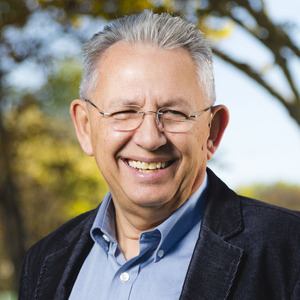What sounds like a simple task at first often turns out to be much more difficult in practice. Such is the situation when attempting to define a multiethnic church. For example, a brief survey of the current literature reveals four words that are commonly used to describe churches where the people come from diverse backgrounds: “multinational,” “multi-racial,” “multi-ethnic,” and “multicultural.”
Multi-racial is the most confusing term. It has roots in the study of genetics, ancestral populations, and medicine. Technically, the word is not a biblical term, and when different versions of the Bible occasionally use the word it refers to a family, nation, or generation of mankind. Even secular writers and researchers now understand the concept of race to be nothing more than a social construction. Unfortunately, we are not likely to see the word disappear anytime soon, since it has found a place in the literature of society. Though different cultures classify people differently, scientists generally group all of humanity into forty-two native population groups that form nine population clusters. Thus, the term multi-racial is not very helpful for church ministry today, since it tends to carry negative, emotional baggage.
Multi-national, is, again, not very helpful for the purpose of talking about a church. Altogether there are approximately 195 nations in the world but this number is frequently changing and is subject to political opinion. Mission agencies used to think in terms of sending workers “to the nations” before greater precision emerged at the first Lausanne Congress on World Evangelism in 1974. At that conference, missiologist Ralph Winter literally changed the course of mission thinking by introducing a concept called “unreached peoples.” Since that time, the strategy has shifted to establishing a church “in every ethnic group” or “people group” in the world, while creating a more precise term: multiethnic.
Multi-ethnic reflects most accurately the biblical concept of “the peoples” and it is the most helpful term when speaking about churches that are comprised of different families, clans, or cultural groups. When Ralph Winter catalyzed the concept of “unreached peoples” beginning in 1974, he simply reiterated the Great Commission of Christ to reach every family, tribe, and ethnic group (ta ethne) in the world. The category of people in Genesis 11 lists about seventy groups. Today, missiologists calculate the world's population to be roughly composed of 17,500 distinct ethnic groups. These groups are defined by having a distinct language and culture into which the gospel needs to become good news. Ethnicity is often a bigger determiner of a people's identity and worldview than race or nationality. Consider the fact that there may be many ethnicities that compose a single nationality, each with its own unique point of view. For practical reasons, we often group people together in cultural families rather than separate them out, identifying them as “Latinos” or “Asians” or “Anglos,” or “Afro-Americans.” Yet, in doing so, we run the risk of ignoring the differences and glossing over the complexities between them.
Multi-cultural is used in describing heterogeneous churches, but it is not always positive. Not only is the term associated negatively with “multiculturalism,” which carries connotations of post-modern universalism, but also it invites other misunderstandings and complexities. Of the four possible terms (there may be more in the future), multi ethnic is preferred. From a missiological perspective, this word fits both the biblical concept and current understanding the best.
What then is a good definition of a multiethnic church? I believe the best definition was offered by the late missiologist Paul Hiebert, who said, a multiethnic church is “a church in which there is 1) an attitude and practice of accepting people of all ethnic, class and national origins as equal and fully participating members and ministers in the fellowship of the church; and 2) the manifestation of this attitude and practice by the involvement of people from different ethnic, social and national communities as members in the church.” This definition does not establish a percentage criteria nor does it establish any particular model or format that must characterize a multi-ethnic church. This is a healthy and realistic definition, since the reality is that multi-ethnic churches come in all shapes, sizes, and make-ups.
Which term do you prefer? Why?
[Adapted from the forthcoming book Being the Church in a Multi-Ethnic Community by Gary L. McIntosh and Alan R.McMahan]
 Biola University
Biola University
.jpg)
.jpg)

